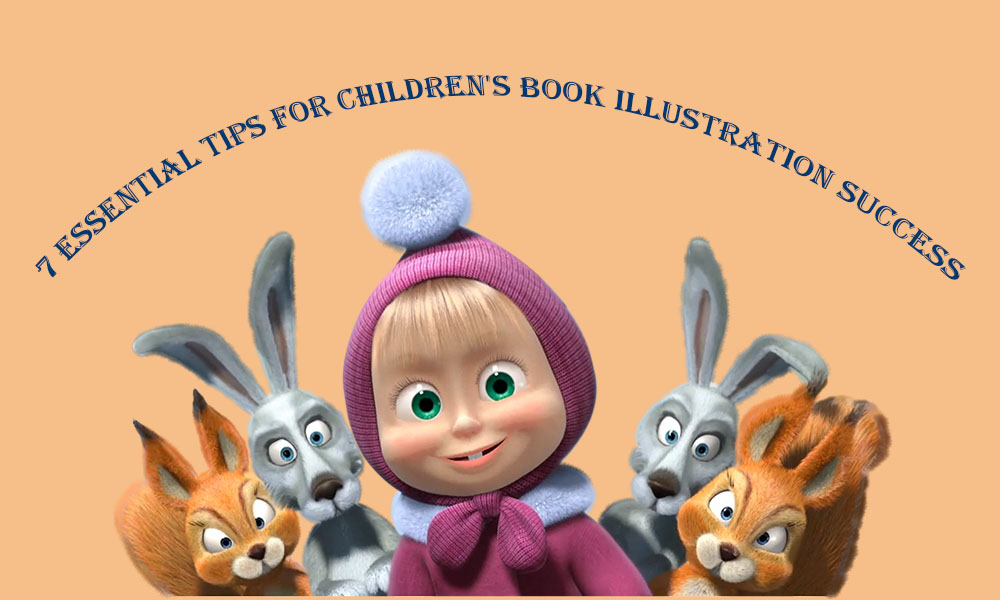Illustrating for children’s books is more than just creating cute and colorful drawings. It’s about visual storytelling that captures young imaginations, complements the narrative, and brings characters to life. Whether you’re an aspiring illustrator or looking to refine your craft, mastering these essentials can elevate your work and make you stand out in a competitive market.
Understand Your Target Audience
Age Group Matters
Before you draw your first sketch, think about who you’re drawing for. Children’s books span a wide range—from board books for toddlers to middle-grade novels with sporadic illustrations. Each age group has different cognitive abilities, attention spans, and visual preferences. Toddlers, for instance, are drawn to bold colors, simple shapes, and expressive characters. They don’t need intricate backgrounds or subtle facial expressions. On the other hand, kids aged 6-9 might appreciate more detail and action in the scenes, along with humorous elements that add a new layer to the story.
Understanding developmental stages helps you choose the right level of detail, the size and placement of illustrations, and even the number of illustrations per page. You’re not just drawing—you’re engaging a young mind and helping them make sense of the world.
Psychological and Emotional Appeal
Children connect with visuals on a deeply emotional level. A scared face, a comforting gesture, or a joyful leap can tell them more than a hundred words. Your illustrations should reflect the feelings in the story. If the character is going on a scary adventure, show the tension in their posture and expressions. If it’s a happy ending, let your colors brighten, and let the characters’ faces glow with joy.
Keep in mind how children process emotions. Exaggerated facial expressions, body language, and symbolic use of color can help younger readers understand what’s happening. It’s not just about drawing characters; it’s about making those characters relatable and engaging.
- Develop a Unique Illustration Style
Standing Out in a Crowded Market
Let’s be honest—there are thousands of talented illustrators out there. What makes your work different? Your style. Developing a signature look isn’t just about using a specific brush or color palette. It’s the way you design characters, how you express motion, how your scenes feel. Do you prefer soft watercolor textures or bold, digital lines? Is your work whimsical, realistic, quirky, or minimalistic?
Your unique style is your brand. It helps readers (and publishers) recognize your work at a glance. Spend time experimenting with different techniques, mediums, and influences until you find a style that feels true to you—and then refine it.
Balancing Artistry with Storytelling
It’s easy to get lost in creating a beautiful piece of art. But remember: children’s book illustrations aren’t gallery pieces—they’re part of a story. Your drawings need to support and enhance the narrative, not overshadow it. That means designing visuals that fit the mood, pacing, and tone of the text.
Think of each illustration as a scene in a movie. What’s happening? Where’s the focus? How do the characters feel? Are you showing something that the text doesn’t say? The best illustrations work hand-in-hand with the story to deliver a complete, immersive experience.
Collaborate Closely with the Author
Aligning Vision and Voice
One of the most rewarding (and sometimes challenging) parts of children’s book illustration is working with the author. Whether you’re hired to illustrate someone else’s book or collaborating on a joint project, you need to understand the writer’s vision. This includes everything from the tone of the story to the personality of the characters.
Start by having a detailed discussion about the author’s goals, preferred style, and any key elements they want highlighted. Share early sketches and concepts. Ask questions like: “How do you see this character?” or “What’s the emotional arc of this scene?” This ensures you’re both on the same page before diving deep into the artwork.
Communication is Key
The best collaborations thrive on open, honest communication. Don’t be afraid to share your professional insights—after all, you bring the visual expertise to the table. At the same time, be open to feedback and revisions. It’s a team effort, and the end goal is a seamless fusion of words and images.
Use mood boards, thumbnails, and concept sketches to communicate visually. These tools can help you explore different directions before committing to final pieces, saving both time and frustration down the line.
Embrace Simplicity with Creativity
Less is More in Children’s Books
Young readers don’t need complex compositions or elaborate backgrounds to stay engaged. In fact, too much detail can overwhelm or confuse them. Simplicity doesn’t mean boring—it means clear, purposeful, and imaginative.
Focus on key elements in each illustration. What’s the central action or emotion? How can you draw the viewer’s eye to it without distraction? Use negative space strategically. Let characters breathe. Sometimes a single expressive face can speak louder than a crowded scene.
Visual Clarity and Engagement
Your goal is to make the page visually digestible and emotionally impactful. Use shapes, lines, and composition to guide the reader’s attention. A well-placed curve or diagonal line can create movement. Contrasting colors can make characters pop. Repetition and pattern can add rhythm.
And don’t forget the interactive aspect. Kids love spotting hidden details, recognizing patterns, or anticipating what comes next. Add little visual Easter eggs—recurring animals, background stories, or funny elements—to reward attentive readers.
Use Colors to Evoke Emotion
Color Psychology in Children’s Books
Color is one of the most powerful tools in your illustration toolkit. It can convey mood, symbolize emotions, and set the tone of the entire book. Warm colors like red, orange, and yellow often feel energetic, happy, or even intense. Cool colors like blue, green, and purple tend to feel calming, soothing, or sometimes sad.
Think of how colors affect the story’s emotional journey. Is the character feeling scared? Use darker, cooler tones. Is there a joyful reunion? Let the page explode with bright, warm hues.
Creating Mood and Atmosphere
Each scene should feel like it belongs to a specific moment in the story, and color helps achieve that. Use lighting and shading to create drama or intimacy. Gradients can suggest time of day, while palettes can unify or contrast scenes for emotional effect.




